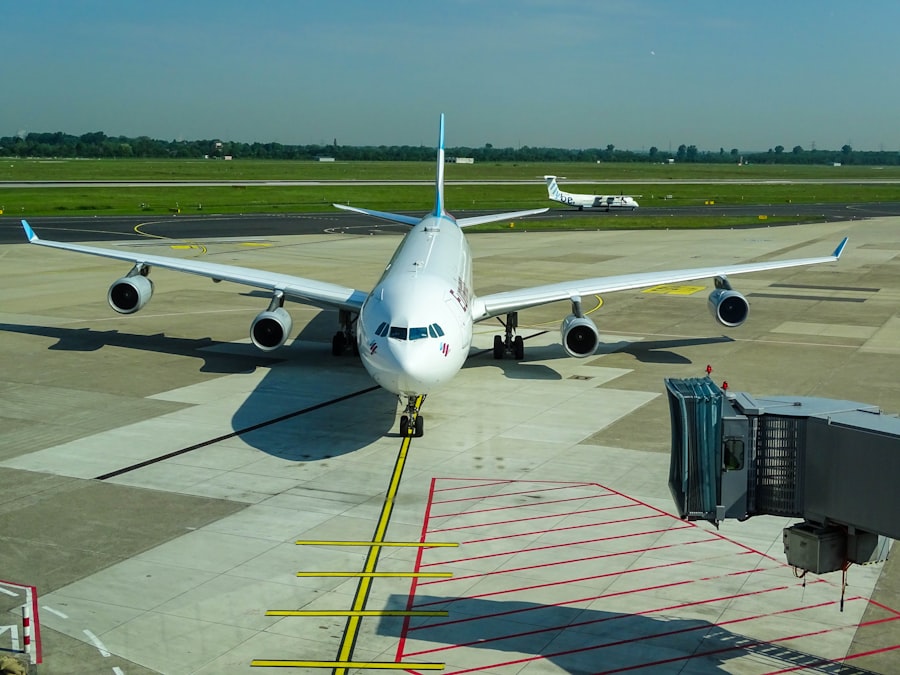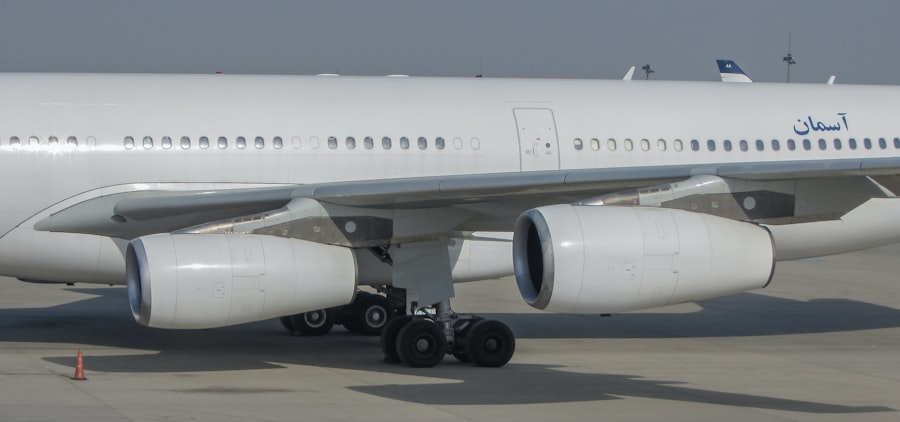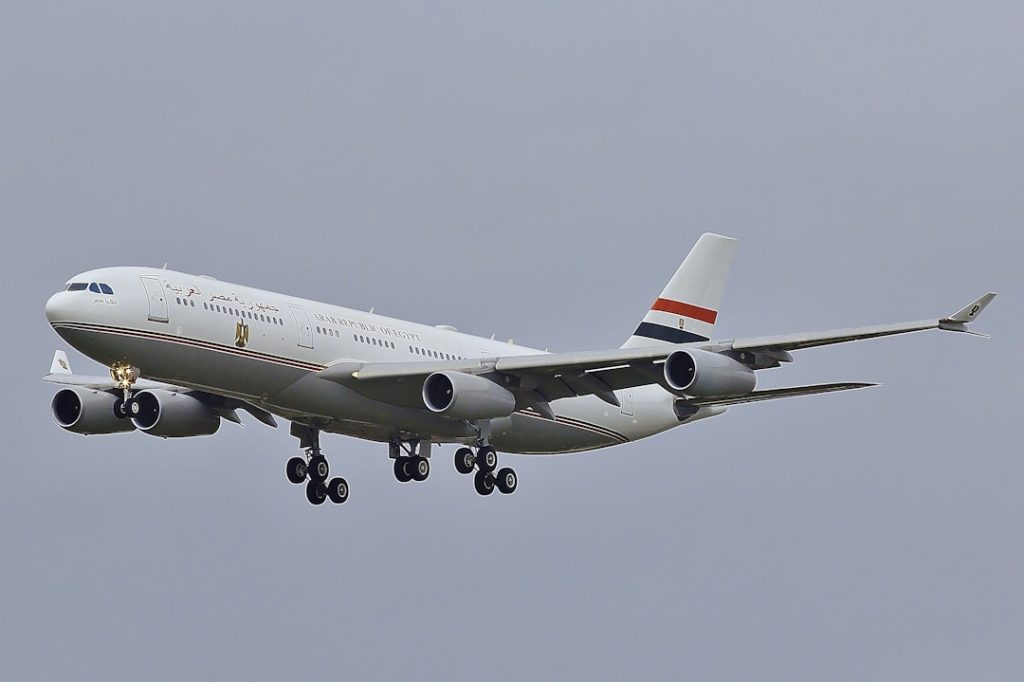The Airbus A340, a long-range, wide-body aircraft, has carved a significant niche in the annals of aviation history since its introduction in the late 1980s. Developed by Airbus, a European aerospace corporation, the A340 was designed to meet the growing demand for long-haul travel while providing airlines with a versatile and efficient aircraft. With its distinctive four-engine configuration, the A340 was engineered to operate on transcontinental routes, connecting cities across vast distances.
The aircraft’s first flight took place on October 25, 1991, and it entered commercial service in 1993, quickly becoming a favorite among airlines and passengers alike. The A340 was conceived during a time when the aviation industry was experiencing a shift towards longer routes and larger passenger capacities. Airlines sought aircraft that could efficiently cover these distances while maintaining high levels of comfort and reliability.
The A340 was Airbus’s response to this demand, offering a range of variants that catered to different market needs. With its ability to fly non-stop over 8,000 nautical miles, the A340 opened up new possibilities for international travel, allowing airlines to connect cities that were previously too far apart for direct flights.
Key Takeaways
- The Airbus A340 is a long-range, wide-body commercial aircraft developed by Airbus in the 1990s.
- It features a four-engine design, advanced aerodynamics, and a spacious cabin layout, making it popular for long-haul flights.
- The A340 revolutionized long-haul travel by offering passengers greater comfort and airlines improved fuel efficiency and operational flexibility.
- Over the years, the A340 has undergone several design and technology upgrades to remain competitive in the evolving aviation industry.
- Despite being phased out of production, the A340’s impact on aviation history and its influence on modern aircraft design continue to be felt, making it an enduring part of aviation legacy.
The Design and Features of the Airbus A340
The design of the Airbus A340 is characterized by its sleek fuselage and four powerful engines, which set it apart from many of its contemporaries. The aircraft is available in several variants, including the A340-200, A340-300, A340-500, and A340-600, each tailored to specific operational requirements. The A340-300, for instance, features a wingspan of 60.3 meters and can accommodate up to 440 passengers in a two-class configuration.
This spacious cabin design is complemented by large windows that enhance the passenger experience by allowing ample natural light into the cabin. One of the standout features of the A340 is its advanced wing design, which incorporates winglets that improve aerodynamic efficiency. These winglets reduce drag during flight, contributing to lower fuel consumption and enhanced performance.
Additionally, the aircraft is equipped with state-of-the-art avionics and fly-by-wire technology, which enhances safety and ease of operation for pilots. The cockpit features digital displays that provide real-time data on flight parameters, allowing for more precise navigation and control.
The Airbus A340’s Impact on Long-Haul Travel

The introduction of the Airbus A340 had a profound impact on long-haul travel, revolutionizing how airlines approached international routes. Prior to its arrival, many airlines relied on twin-engine aircraft for long-distance flights, which often required stopovers for refueling. The A340’s four-engine configuration allowed it to operate on longer routes without the need for intermediate stops, significantly reducing travel time for passengers.
This capability made it particularly appealing for airlines looking to expand their networks and offer non-stop services between major cities. Moreover, the A340’s spacious cabin and advanced in-flight entertainment systems contributed to an enhanced passenger experience. Airlines could offer more comfortable seating arrangements and improved amenities, making long-haul flights more enjoyable.
The aircraft’s ability to carry a large number of passengers also allowed airlines to optimize their operations by filling more seats on each flight, ultimately leading to increased profitability. As a result, the A340 played a crucial role in popularizing long-haul travel and making it more accessible to a broader audience.
The Evolution of the Airbus A340
| Model | First Flight | Length (m) | Wingspan (m) | Range (km) |
|---|---|---|---|---|
| A340-200 | 1991 | 59.39 | 60.30 | 13,700 |
| A340-300 | 1991 | 63.69 | 60.30 | 13,700 |
| A340-500 | 2002 | 67.90 | 63.45 | 16,700 |
| A340-600 | 2001 | 75.30 | 63.45 | 14,600 |
The evolution of the Airbus A340 is marked by several key developments that reflect changing market demands and technological advancements. The initial variants, such as the A340-200 and A340-300, were designed primarily for medium to long-haul routes. However, as airlines sought to push the boundaries of long-distance travel further, Airbus introduced the A340-500 and A340-600 models.
These variants featured extended range capabilities and larger passenger capacities, catering to airlines that required even greater operational flexibility. The A340-500 was particularly notable for its ability to fly ultra-long-haul routes, such as the non-stop service from Newark to Singapore, which covered over 9,500 nautical miles. This capability showcased the aircraft’s versatility and solidified its reputation as a leader in long-haul aviation.
Meanwhile, the A340-600 emerged as one of the longest passenger aircraft in service at the time, with an impressive length of 75.36 meters. This evolution not only demonstrated Airbus’s commitment to innovation but also highlighted the competitive landscape of commercial aviation during that era.
The Enduring Legacy of the Airbus A340
The legacy of the Airbus A340 is one that resonates deeply within the aviation community. While production of the aircraft ceased in 2011 due to shifting market preferences towards more fuel-efficient twin-engine jets like the Boeing 787 and Airbus A350, the A340 remains a beloved aircraft among aviation enthusiasts and former operators alike. Its unique four-engine design has become somewhat of a rarity in modern aviation, as airlines increasingly favor twin-engine models for their lower operating costs.
Many former operators continue to celebrate the A340’s contributions to their fleets. Airlines such as Lufthansa and Virgin Atlantic have fondly remembered their experiences with the aircraft, often highlighting its reliability and performance on long-haul routes. Additionally, several A340s have found new life in cargo operations or as private jets, showcasing their adaptability beyond commercial passenger service.
This enduring legacy speaks volumes about the aircraft’s design and operational capabilities.
The Airbus A340’s Role in Aviation History

The Airbus A340 occupies a significant place in aviation history as one of the first wide-body aircraft designed specifically for long-haul travel with a four-engine configuration. Its introduction coincided with a period of rapid growth in international air travel during the 1990s and early 2000s. The aircraft played a pivotal role in shaping airline strategies around global connectivity and route planning.
Furthermore, the A340’s development marked a critical moment in Airbus’s journey as a major player in the aerospace industry. Competing directly with Boeing’s 777 series, the A340 showcased Airbus’s engineering prowess and commitment to innovation. The aircraft’s success helped solidify Airbus’s reputation as a manufacturer capable of producing high-quality commercial jets that could meet diverse operational needs across various markets.
The Airbus A340’s Influence on Modern Aircraft Design
The influence of the Airbus A340 extends beyond its operational capabilities; it has also left an indelible mark on modern aircraft design principles. The lessons learned from developing the A340 have informed subsequent aircraft designs within both Airbus and other manufacturers. For instance, advancements in aerodynamics and materials used in the construction of the A340 have been integrated into newer models like the Airbus A350 and Boeing 787 Dreamliner.
Moreover, the emphasis on passenger comfort seen in the A340 has set benchmarks for future aircraft designs. Features such as spacious cabins, improved noise insulation, and advanced in-flight entertainment systems have become standard expectations for modern airliners. The focus on enhancing passenger experience can be traced back to innovations introduced with the A340, demonstrating how this aircraft has shaped industry standards over time.
The Enduring Appeal of the Airbus A340
The enduring appeal of the Airbus A340 lies not only in its technical specifications but also in its rich history and cultural significance within aviation circles. As airlines continue to evolve their fleets towards more efficient models, there remains a nostalgic appreciation for the unique characteristics that define the A340. Its four-engine design evokes memories of an era when long-haul travel was synonymous with luxury and comfort.
As aviation enthusiasts gather at airshows or visit museums around the world, many are drawn to the sight of an A340 parked on display or soaring through the skies during special events. This aircraft has become an icon in its own right—a symbol of innovation that pushed boundaries and transformed air travel as we know it today. Whether viewed from an engineering perspective or through the lens of passenger experience, the Airbus A340 will forever hold a cherished place in aviation history.


